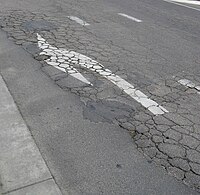
Photo from wikipedia
Induction machines are widely used in several industries around the world; their robust design allows them to operate even under nonoptimal conditions; the nonoptimal operation can reduce the machine lifetime… Click to show full abstract
Induction machines are widely used in several industries around the world; their robust design allows them to operate even under nonoptimal conditions; the nonoptimal operation can reduce the machine lifetime depending on the anomaly magnitude; this leads to a loss of process efficiency, which eventually generates a considerable operational costs increment. Monitoring methods, that allow an early fault detection, are getting developed currently; these methods are focused on the fault detection of the main components of the machine; one of them is the bearing fault detection that can be obtained through the phase current signal analysis. In this article, three types of goodness-of-fit test are studied; in these methods, the motor current signature and the motor square current signature are analyzed. Furthermore, three types of bearing damage are presented and studied; the damages studied are: single point damage (bearing outer-race damage and bearing ball damage), and distributed damage (corrosion damage). The induction machine signals, when working with the damages mentioned before, are measured at two powering conditions: power grid sourced (at 60 Hz constant frequency), and adjustable speed drive (at six operating frequencies).
Journal Title: IEEE Transactions on Industrial Informatics
Year Published: 2021
Link to full text (if available)
Share on Social Media: Sign Up to like & get
recommendations!